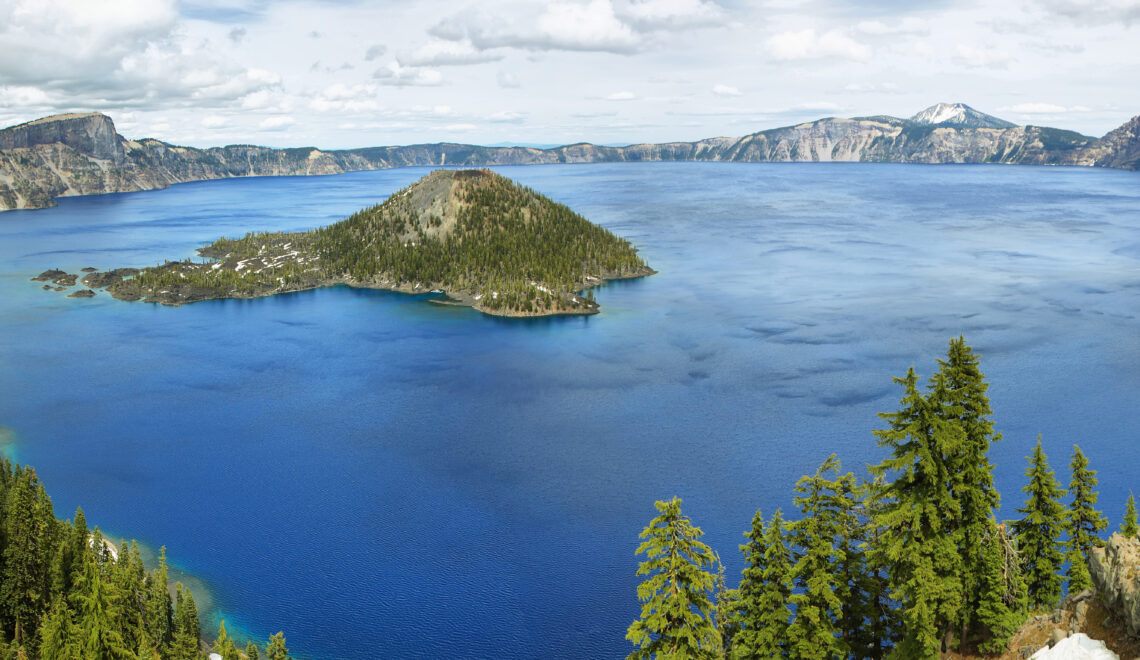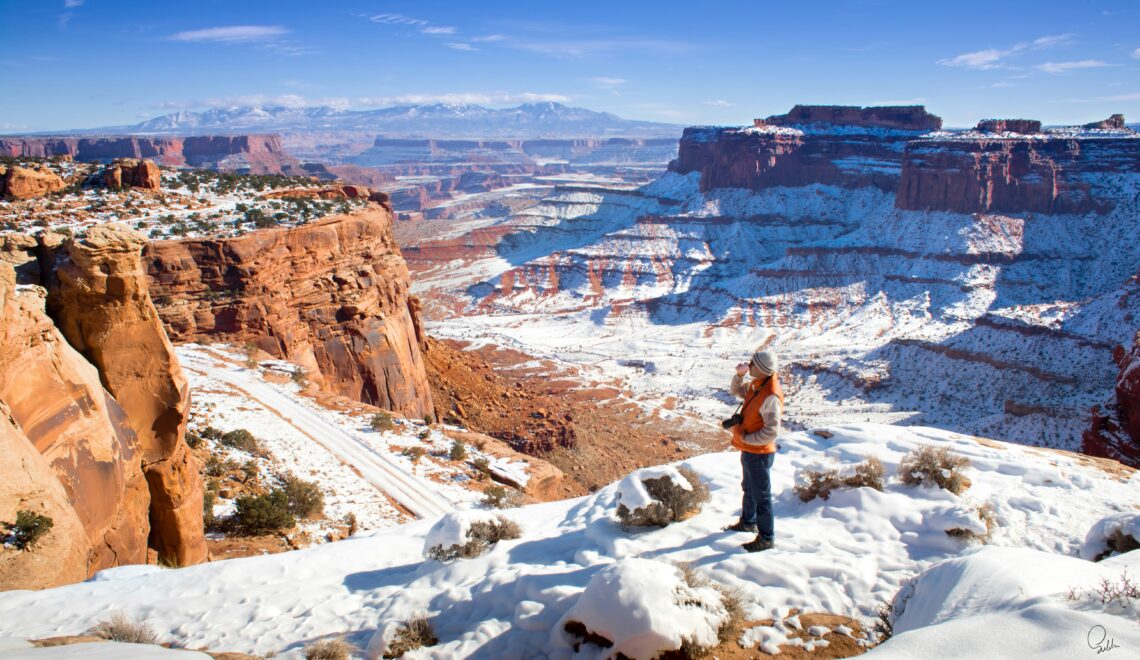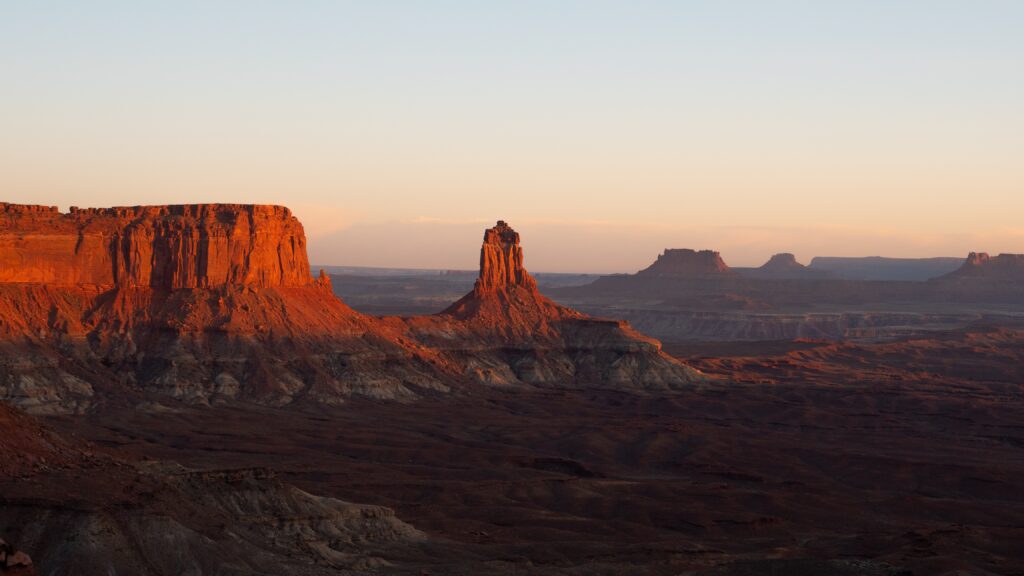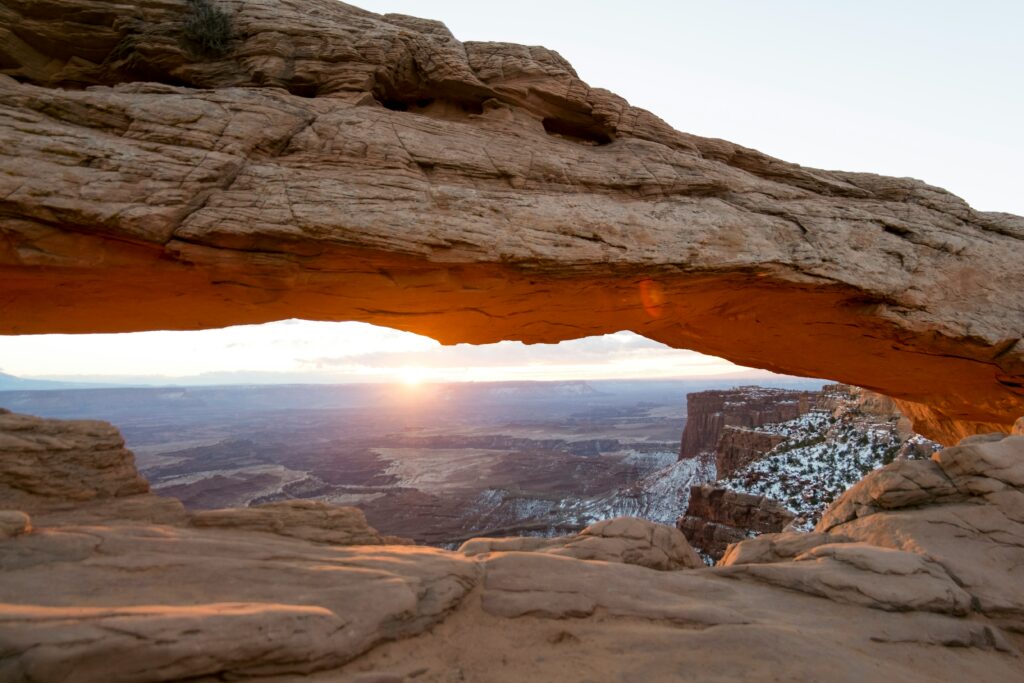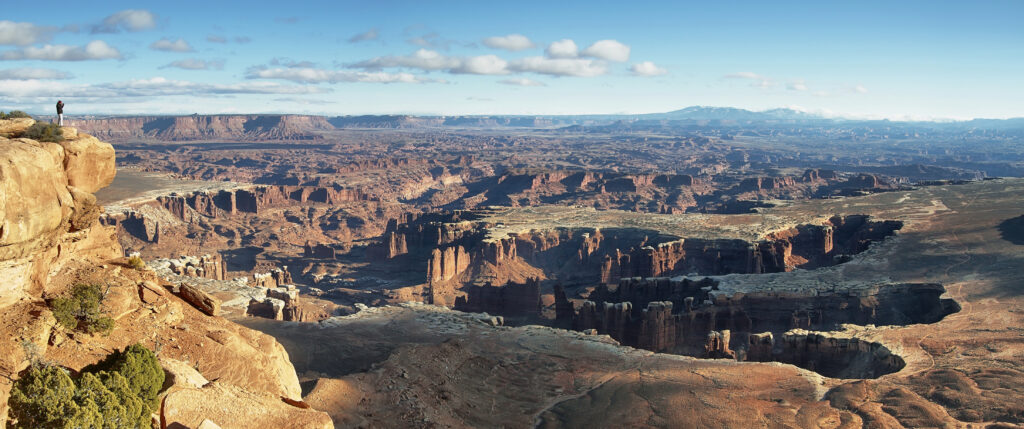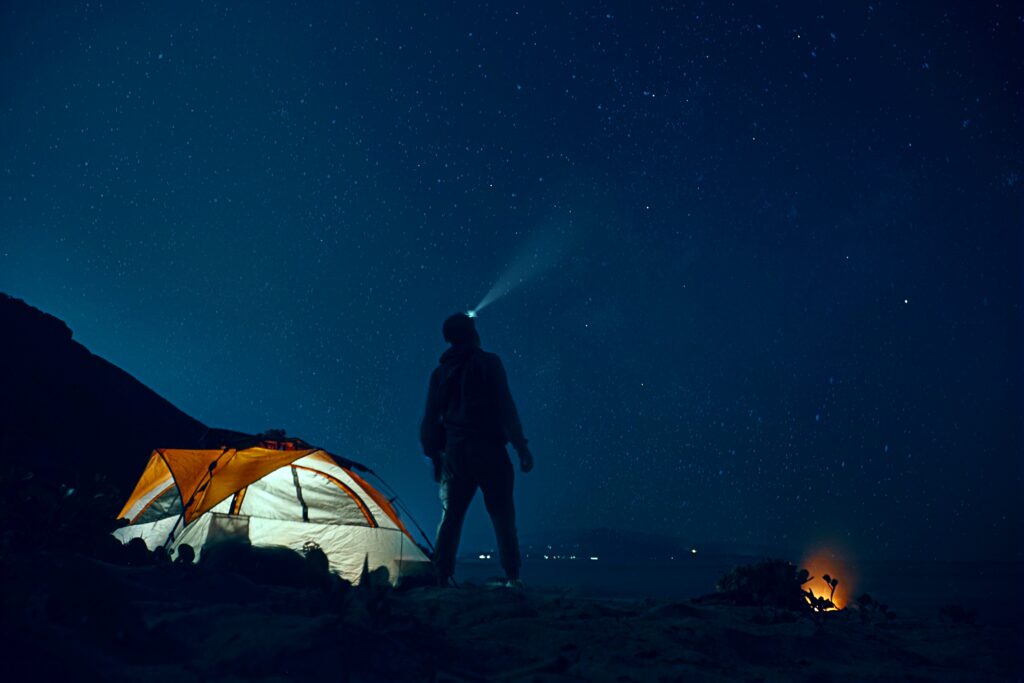Crater Lake National Park for First-Timers: Essential Tips and Must-See Spots
Welcome to your ultimate guide to Crater Lake National Park, a crown jewel of natural beauty in the Pacific Northwest. Renowned for its deep blue waters and stunning scenic views, this guide is tailored for first-time visitors looking to make the most of their trip. From navigating the journey to pinpointing unmissable sights, this comprehensive overview ensures you won’t miss a beat.
Some posts on this site contain affiliate links, meaning if you book or buy something through one of these links, I may earn a small commission at no extra cost to you.
- Planning Your Journey to Crater Lake
- Where to Stay: Accommodations Inside and Near the Park
- Navigating the Park: Transportation Tips and Tricks
- Must-See Spots in Crater Lake National Park
- Hiking Trails for Every Level
- Capturing the Moment: Photography Tips
- Activities Beyond Hiking
- Dining Options: What and Where to Eat
- Top Books for Crater Lake National Park
Planning Your Journey to Crater Lake
Embarking on an adventure to Crater Lake National Park begins with crafting the perfect plan to get you there. Nestled in the heart of Oregon, this natural wonder is accessible, yet remote enough to escape the hustle and bustle of city life. Whether you’re flying in from afar or driving from a nearby city, understanding your options is the first step toward an unforgettable journey.
- Flying In: For those coming from further afield, the nearest airports are in Medford, Oregon (about 80 miles from the park), and Klamath Falls, Oregon (about 60 miles). Both offer rental car services, which you can book in advance to ensure a seamless transition from air to land. From there, the drive to Crater Lake is scenic and straightforward, with well-marked signs guiding you to your destination.
- Driving to Crater Lake: If you’re coming by car, you’re in for a treat. The routes to the park are as stunning as the destination itself. From the north, take Oregon Route 62, winding through lush forests and past rushing rivers. From the south, Route 97 offers breathtaking views of the Klamath Basin. Remember, the park has two main entrances – the north entrance is open seasonally, while the south entrance welcomes visitors year-round.
- Best Time to Visit: Timing is everything when it comes to visiting Crater Lake. The peak season runs from July through September, offering the warmest weather and full access to park amenities. However, for those seeking solitude and don’t mind a bit of snow, visiting in the off-season can be magical. Winter transforms the park into a snowy wonderland, ideal for snowshoeing and cross-country skiing.
Where to Stay: Accommodations Inside and Near the Park
Choosing the right accommodation is crucial to maximizing your Crater Lake adventure. Whether you prefer to slumber under the stars or enjoy the comforts of a cozy lodge, Crater Lake National Park and its surrounding areas offer a variety of options to suit every preference and budget.
- Inside the Park:
- Crater Lake Lodge: Experience historic charm with a stay at the Crater Lake Lodge. Overlooking the lake, this lodge offers stunning views and a rustic ambiance. Advance reservations are highly recommended, especially during the peak summer months.
- Mazama Village Campground: For those who love the great outdoors, the Mazama Village Campground provides a perfect base to explore the park. With sites for tents and RVs, plus nearby amenities, it’s an ideal choice for families and groups.
- Near the Park:
- Union Creek Resort: Just a short drive from the park, this resort offers cozy cabins and vacation rentals, perfect for those looking for a comfortable retreat after a day of exploration.
- Prospect Historic Hotel: Nestled in the nearby town of Prospect, this hotel serves as a charming gateway to the park. It’s a great option for travelers seeking a mix of adventure and history.
Navigating the Park: Transportation Tips and Tricks
Navigating Crater Lake National Park is an adventure in itself, with its vast landscapes and scenic beauty around every corner. Whether you’re driving yourself, hiking, or considering other transportation options, knowing the ins and outs can significantly enhance your visit.
- Driving Around the Park:
- Rim Drive: This scenic route offers breathtaking views of the lake and access to various trailheads and overlooks. It’s a must-do for first-time visitors. Be mindful of the weather, as parts of the road can be closed due to snow, even in summer.
- Parking: During peak season, parking spots at popular viewpoints like Rim Village can fill up quickly. Arriving early in the morning or later in the afternoon can help you find a spot more easily and enjoy the views with fewer crowds.
- Hiking and Biking: For those looking to explore the park’s natural beauty up close, Crater Lake offers an array of trails ranging from easy walks to challenging hikes. Biking is allowed on park roads but note that steep terrain and traffic can make it challenging. Always carry water, a map, and check trail conditions before setting out.
- Park Shuttle Service: To ease congestion and provide a hassle-free way to explore, the park offers a seasonal shuttle service. This service, Wizard Island Shuttle, is a great option to access key locations without the worry of parking. It also allows you to enjoy the panoramic views without having to keep an eye on the road.
Must-See Spots in Crater Lake National Park

Crater Lake National Park, with its deep blue waters and stunning landscapes, is full of must-see spots that enchant visitors. From panoramic vistas to serene trails, here’s where you absolutely must stop:
- Rim Village: Start your adventure at Rim Village, where you can enjoy spectacular views of the lake. Don’t miss the Crater Lake Lodge and the Rim Visitor Center. It’s the perfect spot for those first awe-inspiring photos of the lake’s vivid blue waters.
- Wizard Island: Accessible by boat tour, this cinder cone island offers unique hiking opportunities and incredible views back towards the crater rim. Hiking to the summit provides a different perspective of the lake and surrounding park.
- Cleetwood Cove Trail: The only legal access to the lake’s shore, this trail is a must-do for visitors. The hike down is moderately strenuous but rewards with up-close views of the lake and the chance for a dip in its waters.
- Watchman Overlook: Offering one of the best views for sunset, Watchman Overlook is a short hike away from the parking area and gives visitors a panoramic view of the lake and Wizard Island. It’s also an excellent spot for stargazing.
- Pinnacles Overlook: Venture to the park’s southeast side to view the Pinnacles, where volcanic activity has sculpted ash and pumice into towering spires. This less-visited spot showcases the park’s volcanic history and is ideal for those looking for a quieter experience.
Each of these destinations within Crater Lake National Park offers a unique way to connect with nature, whether you’re seeking the thrill of a hike or the tranquility of panoramic views. From the geological wonder of Wizard Island to the peaceful shores at Cleetwood Cove, Crater Lake’s must-see spots are treasures waiting to be explored.
Hiking Trails for Every Level
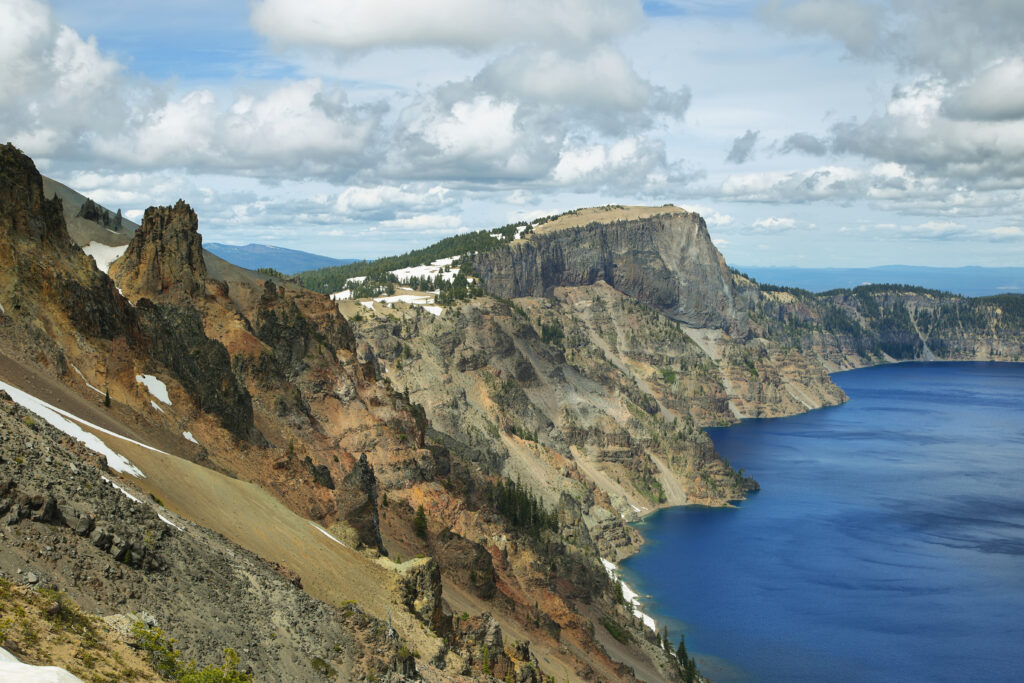
Crater Lake National Park is a hiker’s paradise, offering trails that cater to every level of experience. Whether you’re a family looking for a leisurely walk or an experienced hiker seeking a challenging ascent, the park has something special for you.
- Easy Trails for Families and Beginners:
- Sun Notch Trail: A short and sweet 0.8-mile round trip that provides stunning views of Crater Lake and the Phantom Ship. It’s an excellent choice for families, offering easy terrain and unforgettable vistas.
- Godfrey Glen Trail: This 1.2-mile loop takes you through a tranquil forest setting, perfect for those seeking a peaceful walk. The trail is flat and accessible, ideal for beginners or those with young children.
- Moderate Hikes with Rewarding Views:
- Garfield Peak Trail: For those seeking a bit more adventure, this 3.6-mile round-trip hike offers panoramic views of Crater Lake and the surrounding peaks. The trail is well-maintained but can be steep in sections, making it a rewarding challenge for intermediate hikers.
- Cleetwood Cove Trail: The only trail that leads down to the lake’s shore, this 2.2-mile round trip is moderately strenuous but offers the unique reward of accessing Crater Lake’s waters. Remember, the hike back up is quite steep!
- Challenging Trails for the Experienced Hiker:
- Mount Scott Trail: At 4.4 miles round trip, this is the park’s highest point and offers unmatched views of Crater Lake and beyond. The trail is challenging, with a steady ascent, but the effort is rewarded with a panoramic vista from the summit.
Capturing the Moment: Photography Tips
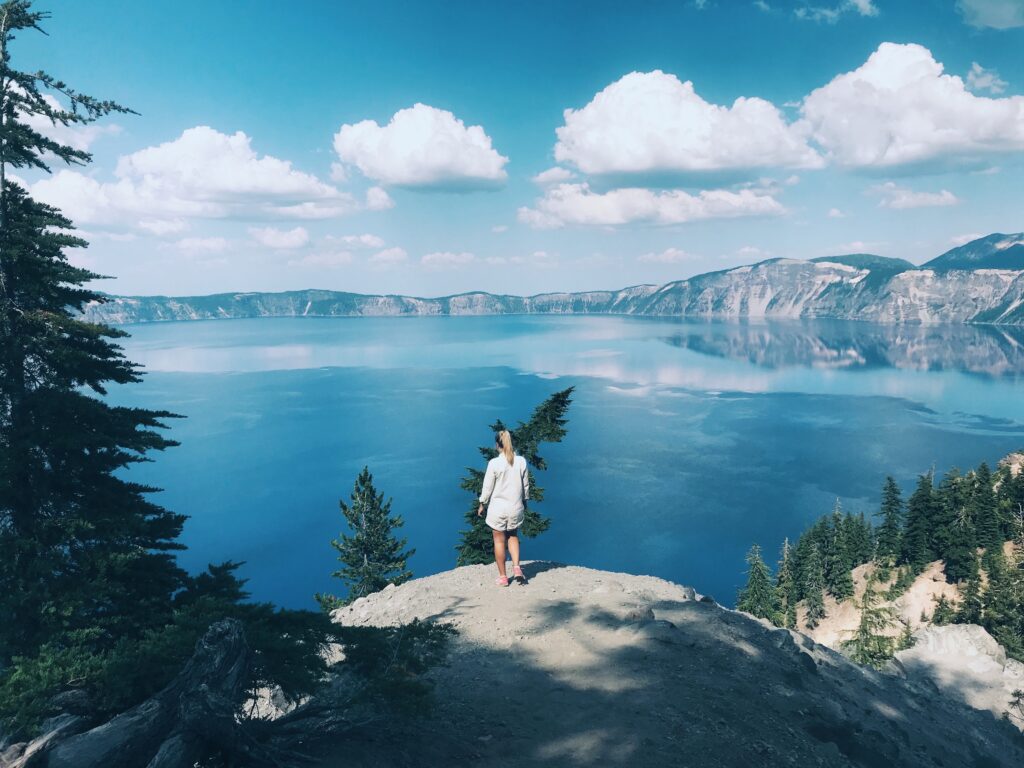
Crater Lake National Park offers a plethora of breathtaking vistas, making it a paradise for photographers. Whether you’re a seasoned photographer with a DSLR or a casual snapper using a smartphone, these tips will help you capture the park’s majesty in all its glory.
- Understanding Light:
- Golden Hours: The hour after sunrise and the hour before sunset are magical times when the light casts a warm glow over the landscape. During these times, Crater Lake’s blues appear most vibrant, and the shadows create dramatic landscapes.
- Midday Challenges: Bright midday light can flatten the visual depth of your photos. If visiting during these hours, seek out shaded areas or use a polarizing filter to reduce glare and enhance the sky’s and water’s blues.
- Iconic Shots and Unique Perspectives:
- Rim Village: Offers classic views of the lake. Experiment with different focal lengths; a wide angle can capture the lake’s expanse, while a telephoto lens can isolate distant features like Wizard Island.
- Seek New Angles: Don’t just stick to the popular spots. Trails like Garfield Peak or Watchman Overlook provide higher vantage points. For a unique perspective, try capturing reflections of the lake in puddles or from less frequented west side overlooks.
- Night Sky Photography:
- Stellar Displays: Crater Lake’s dark skies offer fantastic opportunities for night sky photography, including star trails and the Milky Way. Use a tripod and a long exposure to capture the stars’ movement or the galaxy’s swirl.
- Light Painting: For an artistic touch, use a flashlight to gently illuminate foreground elements like trees or rocks against the backdrop of a star-filled sky.
- Respecting the Environment:
- Remember, while capturing the beauty of Crater Lake, it’s essential to respect wildlife and the natural landscape. Stick to designated paths and viewpoints to minimize impact. Always prioritize the environment over getting the perfect shot.
Activities Beyond Hiking
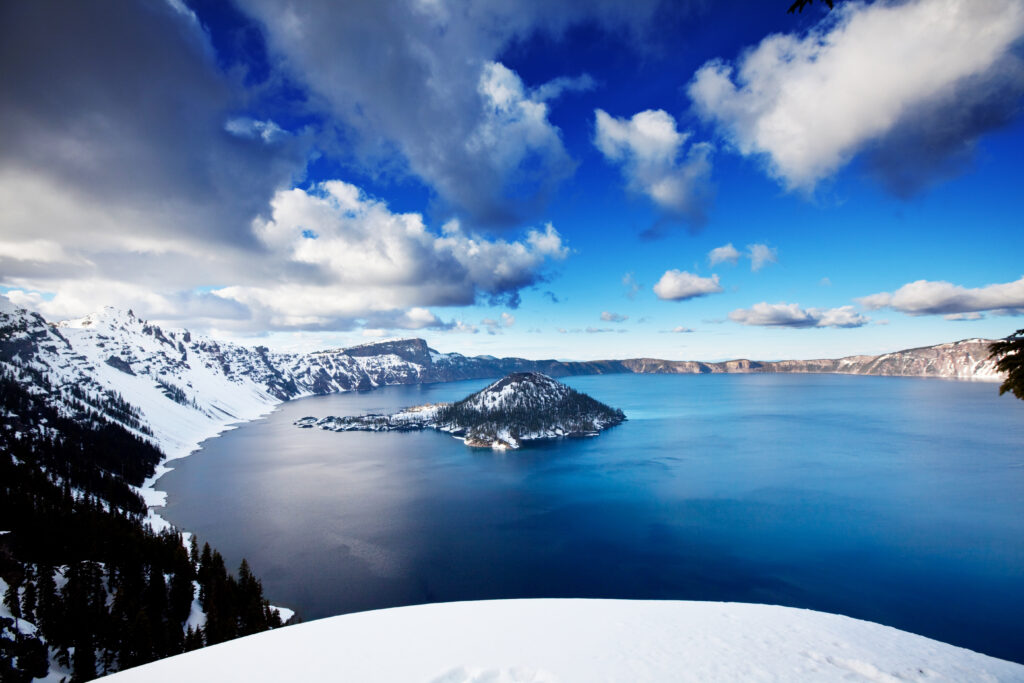
Crater Lake National Park isn’t just a haven for hikers; it’s a playground for all kinds of adventurers. From serene boat tours to thrilling snowshoe walks, the park offers a myriad of activities that allow visitors to engage with its natural beauty in diverse and exciting ways.
- Boat Tours to Wizard Island:
- Embark on a scenic boat tour that takes you across the crystal-clear waters of Crater Lake to Wizard Island. This is a unique opportunity to see the lake from a different perspective and explore the cinder cone island up close. Tours typically run during the summer months, and reservations are highly recommended due to their popularity.
- Once on Wizard Island, you can hike to the summit or enjoy fishing in the pristine waters, making for an unforgettable experience.
- Stargazing Nights:
- Crater Lake’s remote location and clear skies provide perfect conditions for stargazing. The park organizes night sky viewing events, where rangers guide you through the constellations, planets, and galaxies visible overhead. It’s a mesmerizing experience to witness the Milky Way’s band stretching across the sky, with shooting stars occasionally darting through the darkness.
- Bring a blanket, some warm clothes, and a thermos of hot chocolate for a cozy night under the stars.
- Snowshoeing Adventures:
- In the winter months, Crater Lake transforms into a snowy wonderland, offering a whole new array of activities. Ranger-led snowshoe walks are a popular choice, providing a fun and educational way to explore the winter landscape. The park provides snowshoes free of charge, making this an accessible activity for everyone, regardless of experience.
- These walks not only give you a unique view of the park’s winter beauty but also teach about the park’s geology, wildlife, and history.
- Biking Around Rim Drive:
- For those who prefer wheels to walking, biking around Rim Drive is an exhilarating way to take in the panoramic views of Crater Lake. With challenging ascents and thrilling descents, the road offers a rewarding experience for cyclists. Early summer, when parts of the road are still closed to motorized vehicles, is the best time to enjoy a quieter ride.
- Ensure you’re well-prepared with water, snacks, and a repair kit, as the route can be demanding. But the effort is well worth it for the unparalleled views and sense of achievement.
Dining Options: What and Where to Eat
Finding the perfect spot to dine can be just as important as planning your hikes and activities at Crater Lake National Park. Whether you’re looking for a quick snack to fuel your adventures or a sit-down meal to relax and enjoy the park’s natural beauty, there are options to satisfy every appetite.
- Rim Village Café:
- For a casual dining experience with a view, the Rim Village Café offers a variety of options, from sandwiches and salads to more hearty fare. It’s the perfect place to grab a bite while enjoying spectacular views of Crater Lake. Don’t forget to try their famous huckleberry ice cream – a treat well deserved after a day of exploring.
- The café also provides grab-and-go options, ideal for those looking to picnic along the rim or on a trail within the park.
- Crater Lake Lodge Dining Room:
- If you’re seeking a more formal dining experience, the Crater Lake Lodge Dining Room serves breakfast, lunch, and dinner with an emphasis on local Oregon cuisine. The dining room’s large windows offer diners breathtaking views of the lake, making it a memorable place for a meal.
- Reservations are recommended, especially for dinner, as it’s a popular spot for guests to unwind and enjoy the sunset over the lake.
- Mazama Village Store:
- Located near the Mazama Campground, the Mazama Village Store is your go-to for self-catering supplies. Here, you can stock up on groceries, snacks, and all the essentials for a perfect picnic or campfire meal. They also offer a selection of prepared foods for a quick and easy meal solution.
- This is a great spot to gather ingredients for a meal under the stars, offering everything from fresh produce to local wines and craft beers.
- Bringing Your Own Food:
- For those who love to cook, bringing your own food and utilizing the picnic areas scattered throughout the park can be a rewarding experience. Many sites offer picnic tables and grills, allowing you to prepare your meal surrounded by nature. It’s a wonderful way to immerse yourself in the park’s serene beauty while enjoying your favorite foods.
Top Books for Crater Lake National Park
Trails of Crater Lake National Park & Oregon Caves National Monument
“Trails of Crater Lake National Park & Oregon Caves National Monument” is your ultimate travel buddy for exploring the breathtaking landscapes of Oregon. This guidebook doesn’t just walk you through the trails; it immerses you in everything from the vibrant wildflowers to the local wildlife, all while dishing out practical tips on where to crash after a day of adventuring. The detailed trail descriptions make navigation a breeze, and the illustrated chapters on the parks’ history and geology are like having a personal tour guide in your backpack.
Crater Lake National Park (Images of America)
This offers a visually stunning journey through the transformation of Mount Mazama into the breathtaking Crater Lake. This book is a treasure trove of historical photographs and stories that chart the park’s evolution from a volcanic powerhouse to a serene national treasure. The narrative is as captivating as the images, taking readers on a geological and ecological adventure that is as educational as it is visually appealing. It’s an accessible and engaging read that makes the history of Crater Lake National Park come alive, proving that sometimes, the most mesmerizing stories are those carved by the earth itself.

